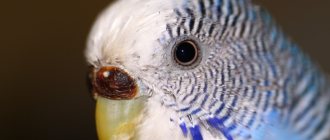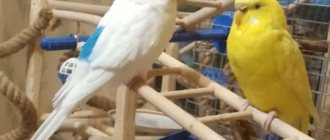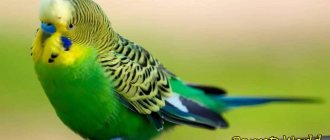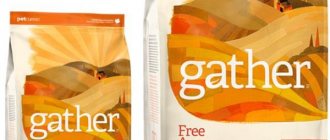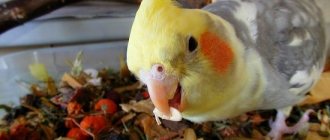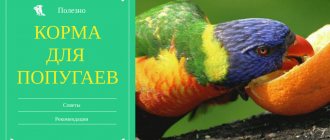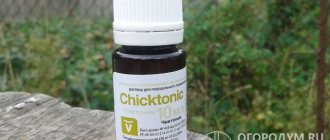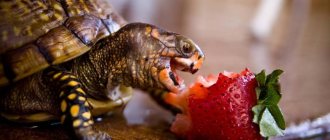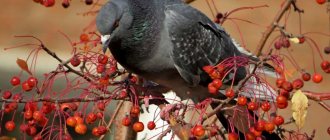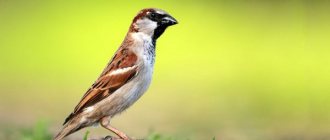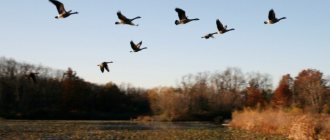Succulent herbs, seeds and fruits are what parrots eat in their natural environment. In warm Australia, there is food for birds at any time of the year. Exotic fruits and berries grow there, but the main food is seeds, cereals, and nuts. The diet of a parrot kept in captivity should be equally varied. With proper feeding, the pet will be healthy, active, and sociable. A poor diet can lead to disease and shorten the bird's lifespan.
Basic principles of nutrition for budgies
The food must contain proteins that ensure vital functions and participate in various metabolic processes. To maintain energy and form fat, carbohydrate intake is important. A large role is given to vitamins A, D, E, K, group B and others.
Minerals are involved in the formation of egg shells and skeletal bones. Their birds are obtained from greens, fruits, and mineral supplements. The necessary components include water.
What can you give a budgie besides food list
All elements must be supplied in a certain balance. Both a deficiency and an excess of one of them not only causes a disruption in the functioning of the body, but also leads to improper absorption of other substances and illness of the feathered friend.
The type and amount of food in the diet depend on the parrot’s age and activity. Thus, individuals living in cages require less of it than when kept in an enclosure.
Twigs
Even though the bird will not be able to eat the branch, it still has a place in your house. With the help of the branch, the parrot sharpens its beak and claws, cleanses the oral cavity of food debris and at the same time receives useful components and bark fiber.
For the first time, sticks from the following trees will do: birch, maple, alder. But be sure to heat treat before installation to avoid bacteria and dirt.
Subspecies of food for birds
They are divided into the following groups:
- grain mixture;
- juicy greens;
- animal origin;
- vitamin and mineral supplements.
Parrots are herbivorous representatives of the fauna. At home, the basis of their diet is mixtures of seeds of various herbs. Other supplements supplement the diet.
Feeding budgies at home
Grain mixtures as the basis of poultry nutrition
What does it contain?
The most significant part, up to 50-60%, is millet of different varieties. This is the cheapest type of seed, containing mainly carbohydrates. Red millet is not easily eaten by parrots, however, its presence is also necessary due to its abundance in the composition. Smaller, most protein-rich, canary and oilseeds. The content of oats in the mixture is limited to 30% of its volume, otherwise the parrot will suffer from constipation.
Read also
Food Rio for budgies reviews
Daily intake of grain food for a parrot
The wavy should receive approximately two teaspoons of grain per day, i.e. about 12-15 grams. It is advisable to divide it in equal parts into the morning and evening.
If we talk about individual types of seeds, their approximate amount (in grams) in a daily serving is as follows:
What do budgies eat?
- millet - 10.0;
- canary seed – 1.0;
- oats – 5.0;
- crushed sunflower kernels – 1.0;
- oatmeal – 2.0;
- wheat – 1.0;
- hemp – 1.0;
- barley – 2.0;
- flaxseed – 2.0.
Store-bought or homemade – which is better?
You can prepare grain mixtures yourself or purchase them at a pet store. Their range is quite wide. Previously, it was believed that domestic producers often violate the rules for growing, storing, and transporting seeds and that offering their products to a pet is dangerous. However, if it is not possible to give your pet imported grain mixtures, it is permissible to replace them with a well-proven Russian analogue.
You can prepare grain feed yourself. If you manage to grow the necessary plant crops in environmentally friendly conditions and have the skill to determine the maturity of seeds and harvest, then your pet is very lucky. Otherwise, there is no point in purchasing ingredients separately for subsequent mixing. The products of the most popular brands are already balanced in composition to suit the needs of your pet, and often contain seeds of crops that cannot be found in their pure form.
WHAT TO FEED A BUDGY PARROT? FOOD OF THE BUDGET PARROT
Is it worth feeding tits?
We need to start with the fact that feeding tits is not only possible, but also necessary. Everyone is familiar with the great tit from childhood - the same titmouse bird from books. So, great tits are active fighters against various harmful insects, and during the warm season they destroy a huge number of forest and garden pests: aphids, caterpillars, weevils, bedbugs. Any gardener and gardener, without even realizing it, uses the services of these little crop protectors every year. Someone will say that tits can also cause harm: they try to steal the insulation at the dacha, or feast on ripe sunflowers. But, to be honest, this cannot be compared with the benefits they bring, and the cheerful chirping of these elegant birds enlivens any area.
Even in winter, titmouses continue to look for insects in crevices and cracks of the bark.
With all the small invertebrates hiding for the winter, times are tough for insectivorous birds. The mortality rate among them in cold weather is very high. Previously, it was often written that out of ten tits, only one survives by spring. The latest research says that about half of these birds die during the winter. In any case, the numbers are very gloomy. So both summer residents and just all lovers of wildlife should think about helping tits (and other small birds) survive harsh times and feed them on their plots, in parks, on the streets, or even just outside the window.
What are the benefits of sprouted grains for a budgie?
In the wild, budgies most of the time feed on all kinds of shoots and unripe seeds. Food made from sprouts, the composition of which is as close as possible to their natural diet. During the birth of a plant inside the grain, its biochemical composition changes, the content of vitamins B and E increases, and enzymes are formed that improve the digestion process.
It is especially important to supplement the diet with sprouts during the breeding season. However, if you are not confident that you will be able to maintain the required quality of the product, it is better to avoid this additive altogether. If the technology is not followed, dangerous microorganisms and fungi can easily grow in it. Igor Ignatenkov
How to prepare food from sprouts?
To prepare it, it is recommended to take raw oats and mixed grain feed in a 1:1 ratio. After washing, the composition is filled with water and infused for about a day. Then the unusable floating grains are removed, and the remaining ones are thoroughly washed and poured into a sieve. It is placed above the dish with the next portion of the mixture so that the evaporating moisture moistens its contents. After 24 hours, these seeds are moved to a seedling box for a day at a temperature of about 22 degrees. It is necessary to carefully monitor the condition of the seedlings and the cleanliness of the tray to prevent mold from forming.
What to feed a budgie if you run out of food
Juicy food for parrots
Vegetables and greens in a pet's diet
Your pet needs fresh herbs all year round. Plants such as:
- large or holly plantain;
- quinoa;
- dandelion;
- sorrel;
- sagebrush;
- woodlice;
- young nettle;
- yarrow;
- unripe oats or millet.
It is imperative to monitor the environmental cleanliness of the plant collection site, the absence of nearby roads, factories, and construction sites. You can replace these herbs with lettuce, valerian, spinach, beetroot, as well as carrots, celery, and parsley.

